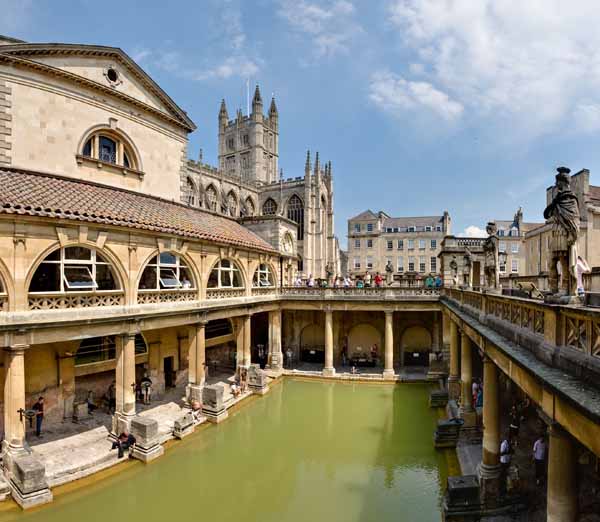Roma antica foro romano colosseo altare della patria circo massimo roma virtuale 3d lazio
sanita-eng
inglese



Healthcare
Today healthcare in Rome isn’t one of the best of the world, you can notice from many documented cases of health service malfunctions.
Nevertheless in the fourteenth century, Rome had 27 hospitals, some were even of high architectural interest, like the Ospedale Santo Spirito (Holy Spirit Hospital) San Giacomo hospital in Augusta (known as of the Incurable, because it accommodated the sick with syphilis), or Ospedale del Salvatore (Hospital of Savior) in St. John’s in Lateran. Nonetheless healthcare in Rome hasn’t made much progress since past times.
The situation was very different when Rome was the capital of the Roman Empire.
Rome turned to the Greek medicine, after being relied on the Etruscan medicine, and in 219 b.C. the first medical ambulatory was created, financed by the Senate and managed by the Greek physician Archagatos.
The Greek physicians were received with open arms in Rome, Julius Caesar and the Emperor August gave them the right of citizenship, but they forbade them to return to their native country.
The“tabernae medicinae”, medical ambulatories, were created. They had medicines, bandages and surgical instruments. The Romans were considered as skilled surgeons, like their ancestors, the Etruscans, in past times.
There were the hospitals too. The first Hospital a Roma was built in the “Insula Tiberina”. It was erected in 293 b.C. It was a temple dedicated to the God of Medicine( Esculapio). The first chemist’s shop was erected too, where the “pharmacotriba” (chemist), sold useful medicines and he prepared them on his own, following the medical prescription.
Nevertheless during past times there were the so called “recommended people”; as shown by the presence of the “valetudinaria”, (hospitals situated by the big farms, the gyms and the military camps), which the citizens couldn’t visit. Here, who was considered as “useful and necessary for the good functioning of the Country for his civil or work condition was treated.
The health care in Rome had a real social character, it was set up a community dealing with the health services and with the aim of preventing diseases.
The aqueducts had been built since IV century. B.C, Many of them were still visible, such as the Appio A queduct, AnioVetus Aqueduct, Aqueduct of Acqua Marcia. They were built in the empire, to carry drinking water to the city, to supply the public baths, the fountains, but also to improve the down-flow of the sewer systems.
queduct, AnioVetus Aqueduct, Aqueduct of Acqua Marcia. They were built in the empire, to carry drinking water to the city, to supply the public baths, the fountains, but also to improve the down-flow of the sewer systems.
In 12 b.C. Marco Vipsanio Agrippa opened in Campus Martius the first thermal structure.
Afterwards the Roman emperors built bigger and bigger Thermal baths: Nero in 65 a.C., Titus in '81 a.C., Domitian in 95 a.C., Commodus in 185 a.C., Caracalla in 217 a. C. (which could accommodate 1600 people), Diocletian in 302 a.C., and Constantine in 315 a.C..
The Romans built big Thermal baths, everywhere, some could accommodate 6000 people, and for ensuring the popularity, the admission prices to the thermal baths were very cheap, the admission was often free.
The thermal baths were real sanitary fittings: heated, with changing rooms and services, such as the sauna. It was possible to hire sandals of leather, towels, or to buy soaps and fragrance oils.
Inside, there were real sport centres, with swimming pools, gardens, book shops, with small places to listening to poetry and music and a party room. There were even “ad personam programmes” which suggested the suitable programme to follow, including the exercises, the massages, and a thermal therapy.
The Roman citizens who finished work at early afternoon went to the thermal baths. They opened at midday, before lunch.
They were places of socialization and relax, you could find places for restoration or for rest.
Depending on the historical periods, it was possible to have a bath naked with people of the other sex …or spent some hours in "pleasant" company, or if possible you could find a “lupanarae” in the surroundings.
Unfortunately, today all this has disappeared , and the Romans have to go for the thermal treatments to the surroundings of Rome, to Tivoli or to the thermal baths of Ficoncella (ancient thermal baths near Civitavecchia, were once there were the “Taurine” Thermal Baths or Trajan Thermal Baths ), before applying from necessity, and unwillingly to the “fate” of our current medical services.
